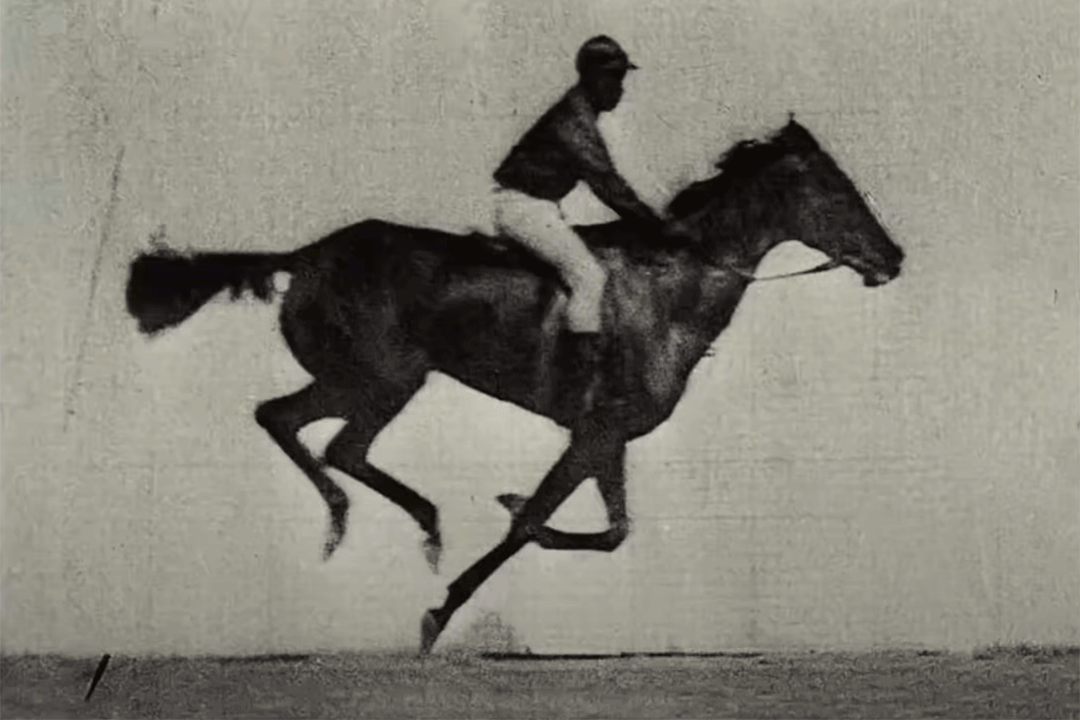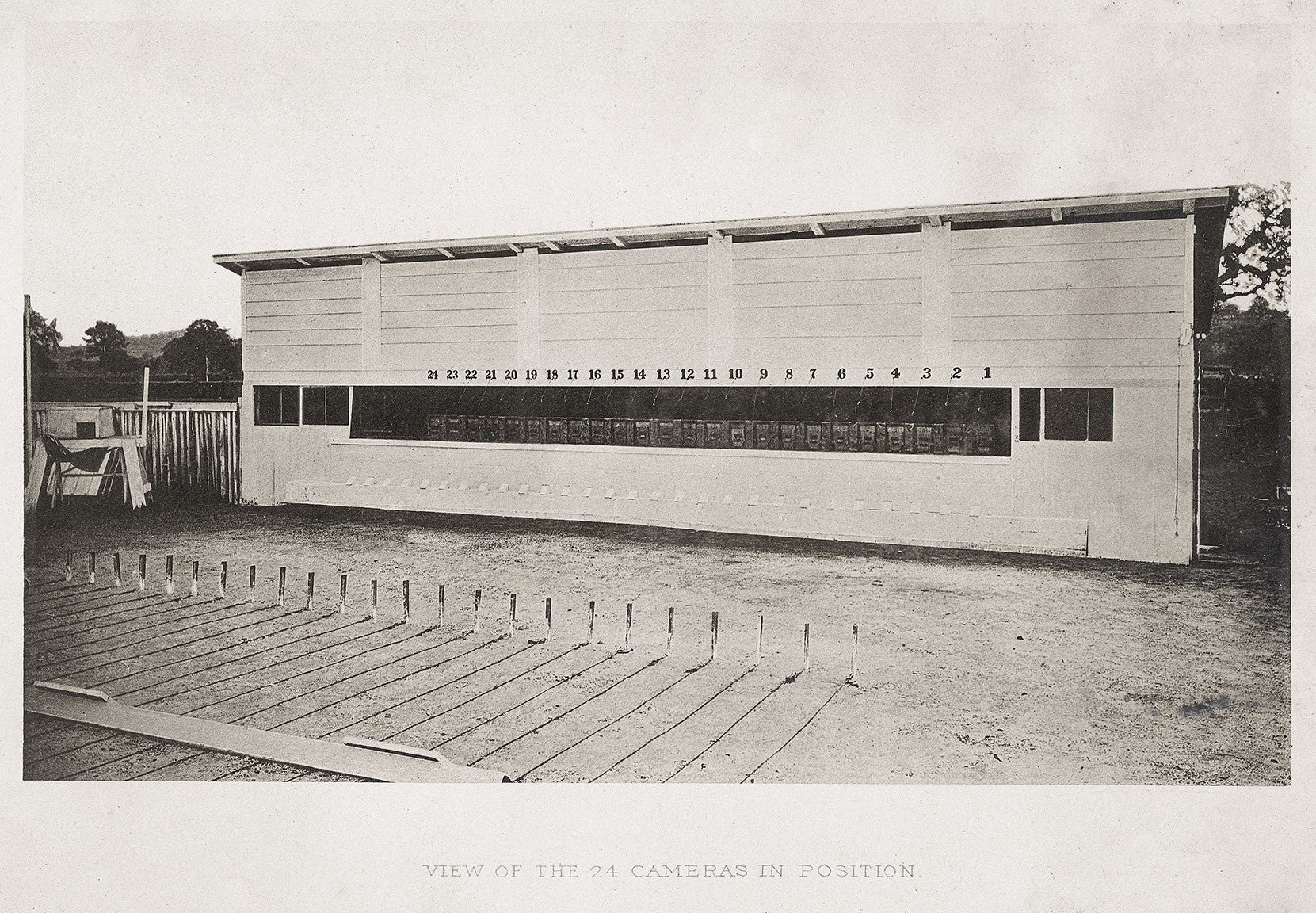
100 years of cinema cameras.
a collection of early motion picture apparatus
The history of motion pictures starts at the very beginning of the story of the moving image, the invention of the motion picture camera.
The first motion picture camera, the primary tool of todays cinematographer was invented over 100 years ago. The “motion picture’ or animated pictures as they were originally referred to, had its beginnings with the experiments of Eadweard Muybridge starting in the early 1870’s.
Muybridge devised techniques to capture animal and human motion, to depict movement as sequences of still images, and to animate these into the first moving picture. In 1878 to help settle a bet, Muybridge using his newly developed shutter technique and refined paper emulsion, successfully photographed horses in motion capturing movements that were not previously seen..
“If several objects differing from one another gradually in shape and position appear successively before the eye during very short and sufficiently close intervals, the impressions which they produce on the retina will be linked together without being confused, and one will believe see a single object gradually changing shape and position.”
The later work of Ottomar Anschutz improved upon Muybridges photographic techniques. But it wasn’t until the late 1880’s when Pioneering British inventor William Friese-Greene and later Louis Le Prince set out to further this work with more practical approaches that the first motion picture camera starts to come into shape. These “cameras” were awkward to use, but their work inspired others to create better solutions.
In 1895 The Lumiere brothers created their apparatus called the Cinématographe. This was arguably the first true motion picture camera as we know it today. Much smaller and lighter than Edison’s earlier Kinetograph, it weighed around 11 pounds and operated with the use of a hand crank. The Cinématographe exposed film at 16 frames per second, much slower than Edison’s 48 frames per second, which meant that it used far less film and could be easily transported to locations.
Auguste and Louis Lumiere went on to produce many short films with their new invention becoming the earliest filmmakers in history. Their 16 frames became the new industry standard as the race to develop and sell even better motion picture cameras begins.

Pioneers of the Motion Picture Camera
Louis Le Prince
Louis Le Prince is regarded by some as the father of cinematography, but his story ends suddenly in 1890. There are many conspiracy theories attempting to explain his sudden disappearance, but what we do know is that Le Prince was one of the first to shoot a motion picture sequence. The short motion clips he captured in late 1888 of his family in Leeds, England are the first know motion pictures recorded.
While Thomas Edison and the Lumière brothers dominated the headlines for inventing the equipment which made animated pictures possible, Louis Le Prince preceded both inventors by several years with a working model.
William Kennedy Laurie Dickson and Thomas Edison
Not long after Le Prince’s disappearance In 1890, Edison announced his Kinetoscope.
Edison’s assistant and protégé, William K. L. Dickson was a key figure in the practical development of the system. He was born in France and emigrated to the United States in 1879. Joining Thomas Edison in 1883, he quickly became one of his senior associates. His work on motion pictures began in 1888, and continued for several years. Dickson and his assistants were influenced by the earlier work of Muybridge, Anschütz, and E-J. Marey, who Edison visited in Paris in August 1889.
While Edison is credited for the invention, it was actually Dickson who did the heavy lifting. Although their inventions kick started an industry, the camera was still not the practical apparatus we know today.
The Lumière Brothers
Antoine Lumière attended an exhibition in Paris and after seeing Edison’s Kinetoscope, he immediately tasked his sons with building a more practical camera that could double as a projector.
Auguste began the first experiments in 1894, and by early the following year the Lumiere brothers had come up with their own device, they called their apparatus the Cinématographe.
Much smaller and lighter than the Kinetograph, it is considered to be the very first motion picture camera.
Using their new Cinématographe, the Lumière brothers shot footage of workers at their factory leaving at the end of the day. They showed the resulting film, “La Sortie des ouvriers de l’usine Lumière” at a meeting in Paris in March 1895.
By 1905, the Lumières had withdrawn from the movie making business and switched gears to a new color process for photography, known as Lumière Autochrome. Meanwhile, their pioneering motion picture camera, the Cinématographe etched its place in history despite missing out on the cinema revolution that followed.
Kazimierz Prószyński.
The Polish Prószyński invented the Pleograph in 1894 (its name derived from the phonograph) which was both a camera and a movie projector. Prószyński’s invention doesn’t attract much attention, and a year later, the Lumière brothers present their cinematograph to the world. They become known as the fathers of cinematography, and Prószyński’s pleograph remains unknown. Later he invented the Aeroscope, the first handheld film camera.
Vitascope Hall
On July 18, 1896, William T. Rock and Walter Wainright purchased exclusive rights to an Edison Vitascope Projector for the state of Louisiana for $2,500 and opened a theater on Canal Street in New Orleans. This was the first venue in America to exclusively project animated pictures, and the first movie theater was born.
Enjoy my collection of early motion picture apparatus.
Click the link below to see a selection from the collection






